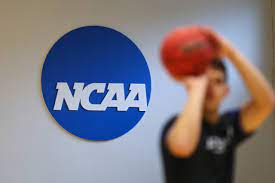NCAA Begins First Year With New NIL Policy

Oct 4, 2021
Following the legislation passed in California regarding college universities prohibiting their athletes from accepting money from endorsements, the National Collegiate Athletic Association (NCAA) agreed to adopt an interim NIL policy for all NCAA divisions. The Name, Image and Likeliness (NIL) agreement gives collegiate athletes the ability to make money off teaching camps, signing autographs, social media and more.
The athletes will not be paid, but they will be able to sign deals with brands to market themselves.
Football is overwhelmingly the most popular watched college sport. With the NIL, we can expect to see players move to schools that help expand their public image. Winning may be bumped to the back seat, if players starts to prioritize economic benefits. When you have athletes who are just trying to make a buck off their name by endorsements, money will mean more to them than the actual game, and sports like football and basketball may become less enjoyable to watch.
“I’m by no means an expert on this, but I know that Division 1 schools make billions of dollars off the performance of the football and basketball players, so it seems fair to allow the athletes to benefit off their own likeness,” varsity basketball coach Michael Wasielewski said.
“I think it’s great to be honest. Major athletes at the highest collegiate level bring in millions of dollars for their respective schools even though they aren’t getting paid for that. It’s important for them to at least own their NIL so they can make money for themselves, and it will change college sports for the better because it’s only fair that they can make money off their own names,” senior Sam Burns said.
The NIL policy was passed on July 1, 2021, and high school athletes were already in the conversation of whether or not they should profit off themselves.
Many are against this idea.
“High school student-athletes should not be considered the same as college student-athletes, who have the opportunity for scholarships, different eligibility requirements, and different access to resources, training, compensation and exposure,” National Federation of State High School Associations executive director, Karissa Niehoff said.
If high school athletes had the ability to use the NIL, some fear it would pressure kids into the digital market rather than keeping them focused on the traditional team values of high school sports.
In California, high school athletes already have access to a NIL as long as they don’t associate themselves with their school.
“If high school athletes were allowed by the IHSA to profit off their likeness, I don’t think it would have much of an impact on high school sports because it might only impact a tiny fraction of athletes. High school sports do not generate the same revenue or interest as college sports. High schools don’t sign TV contracts worth millions of dollars. So high schools are not really profiting off athletics or athletes,” Wasielewski said.



